
How blockchain technology is changing treasury

Blockchain: Separating hype from substance

Commercial real estate in 2020: Keeping up with the pace of change

The AI journey in finance: How to make it part of your strategy

3 emerging technology trends for bankers

The startup scene in Reno: The story of Breadware

The startup scene in Reno: Emerging tech leads the way

Finance or operating lease? Deciphering the legalese of equipment finance

Common pitfalls to avoid in the equipment financing process

Buying or leasing? Questions to ask before signing a contract

The secret to successful service provider integration

Emerging A/R solutions use artificial intelligence to target efficiency

Colleges respond to student needs by offering digital payments

6 timely reasons to integrate your receivables

Benefits of billing foreign customers in their own currency

Drivers for changing accounts receivable in 2021

Integrated receivables management solution supports customer focus at MSC Industrial Supply

Improve government payments with electronic billing platforms

Webinar: Digitizing receivables to transform B2B rent payments

Hospitals face cybersecurity risks in surprising new ways

Webinar: Robotic process automation

Webinar: Empower your AP automation with strategic intelligence

Webinar: Digitize your AP processes to optimize results

Webinar: AP automation—solve payment challenges with an invoice-to-pay solution

Webinar: CRE technology trends
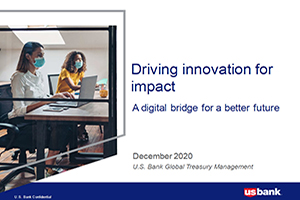
Webinar: Driving innovation to impact treasury management

Webinar: CRE treasury leader roundtable
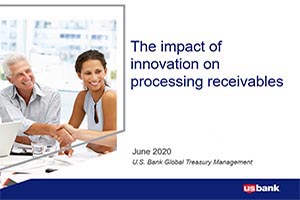
Webinar: The impact of innovation on processing receivables

5 Ways to protect your government agency from payment fraud
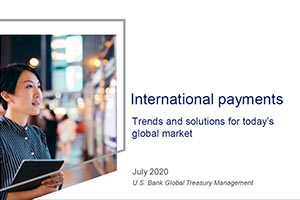
Webinar: International payments

The cyber insurance question: Additional protection beyond prevention

Government agency credit card programs and PCI compliance

Drive digital transformation with payments innovation

Modernizing fare payment without leaving any riders behind

Access, flexibility and simplicity: How governments can modernize payments to help their citizens

Escheatment resources: Reporting deadlines for all 50 states

How electronic billing platforms improve government payments

How real-time inventory visibility can boost retail margins

White Castle optimizes payment transactions

Payment industry trends that are the future of POS

What government officials should know about real-time payments

Higher education strategies for e-payment migration, fighting fraud

Tap-to-pay: Modernizing fare payments pays off for transit agencies and riders

ABCs of APIs: Drive treasury efficiency with real-time connectivity

How emerging banking solutions enable better decisions

Restaurant survey shows changing customer payment preferences

Three healthcare payment trends that will continue to matter in 2022

Want AP automation to pay both businesses and consumers?

Time is money: Intelligent Payment Routing saves businesses both

Digital trends poised to reshape hotel payments

Managing the rising costs of payment acceptance with service fees

Webinar: CSM corporation re-thinks AP

Digital banking for business: How connectivity improves customer experience

Banking connectivity: Helping businesses deliver the easier, faster, more secure customer experience of the future

Adjust collections to limit impact of USPS delivery changes

How to improve digital payments security for your health system

Increase working capital with Commercial Card Optimization

Luxury jeweler enhances the digital billing and payment customer experience

Enhancing the patient experience through people-centered payments

Unexpected cost savings may be hiding in your payment strategy

3 ways to adapt to the new payments landscape

Automate escheatment for accounts payable to save time and money

3 benefits of integrated payments in healthcare

How COVID-19 is transforming healthcare payments

Automate accounts payable to optimize revenue and payments

Top 3 ways digital payments can transform the patient experience

Understanding and preparing for the new payment experience

What to know when investing in AP automation solutions

Webinar: AP automation for commercial real estate

Ways prepaid cards disburse government funds to the unbanked

How AR technology is helping advance payment processing at Avera Health

Top tips for card payments optimization

The benefits of payment digitization: Pushing for simplicity

COVID-19 safety recommendations: Are you ready to reopen?

Collect utility and telecom bill payments faster

Government billing survey: The digital transformation of the payment experience

Safeguarding the payment experience through contactless

Higher education and the cashless society: Latest trends

Zelle® helps Sunriver Resort make payments efficient and secure

3 ways to make practical use of real-time payments

How AI in treasury management is transforming finance

4 benefits to paying foreign suppliers in their own currency

Empowering managers with data automation and integration

Digital Onboarding helps finance firm’s clients build communities

Tailor Ridge eBill case study

What corporate treasurers need to know about Virtual Account Management

Digital receivables to meet changing demand

ABCs of ARP: Answers to American Rescue Plan questions for counties

Treasury management innovations earn Model Bank awards

Webinar: Fraud prevention and mitigation for government agencies

Overcoming the 3 key challenges of a lump sum relocation program

Streamline operations with all-in-one small business financial support

Checklist: What you’ll need for your first retail pop-up shop

How mobile point of sale (mPOS) can benefit your side gig

How to redefine challenges with business collaboration

Why ecommerce for small business strategy is integral

Rethinking common time management tips

How to apply for a business credit card

How to choose the right business checking account

How Everyday Funding can improve cash flow

How a small business is moving forward during COVID-19

How jumbo loans can help home buyers and your builder business

How to accept credit cards online

How running a business that aligns with core values is paying off

Meet the Milwaukee businessman behind Funky Fresh Spring Rolls

3 ways to gain loyalty with your customers

How to Adult: 5 ways to track your spending

When your spouse has passed away: A three-month financial checklist

How to save money in college: easy ways to spend less

Dear Money Mentor: What is cryptocurrency?

Is online banking safe?

8 tips and tricks for creating and remembering your PIN

Webinar: U.S. Bank asks: Are you safe from fraud?

3 financial tools to help automate your finances
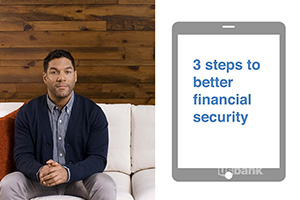
Webinar: Mobile banking tips for smarter and safer online banking

3 awkward situations Zelle can help avoid
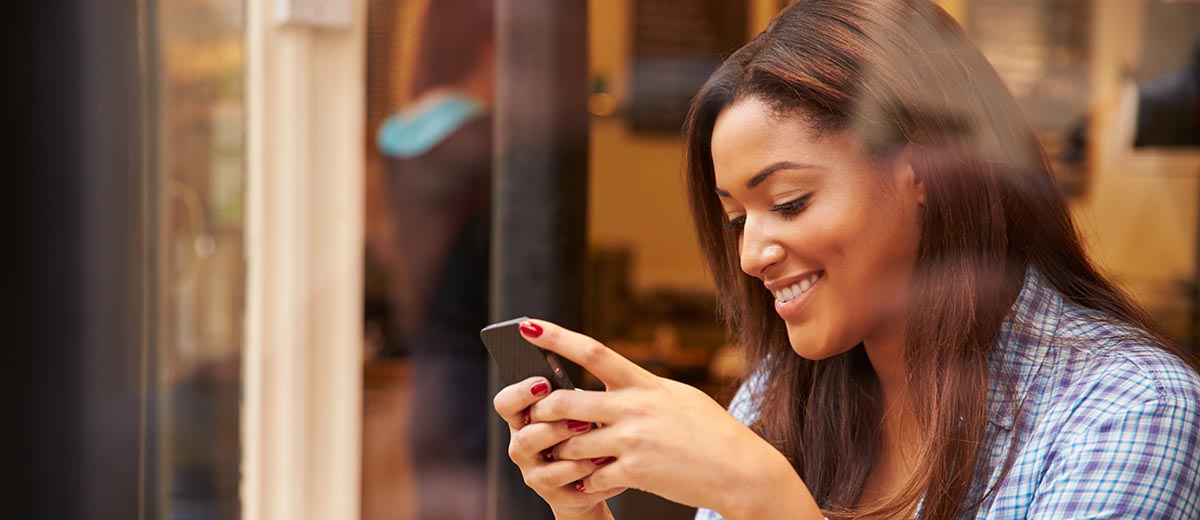
Stay on budget — and on the go — with a mobile banking app

Save time and money with automatic bill pay

Dear Money Mentor: How do I set and track financial goals?

How voice-activated devices work with banks

P2P payments make it easier to split the tab

Overdrafts happen: Steps to get you back on track

Dear Money Mentor: How do I begin paying off credit card debt?

Improving your credit score: Truth and myths revealed


